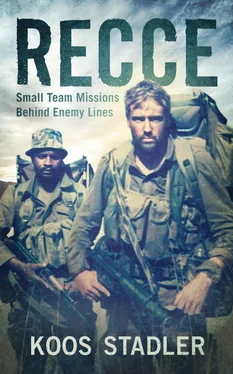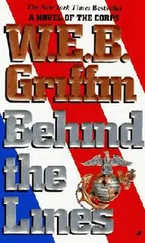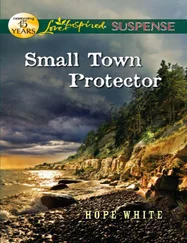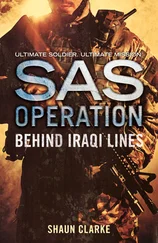Renken and Mashavave were the only South Africans killed in the operation. Mashavave’s body was flown back after the initial attack (the combat zone had to be cleared before the helicopters would approach for the pick-up), while Renken’s remains were placed in a body bag and transported in our Casspir. The high spirits Thinus Riekert and I had felt on the inward journey were gone. As soon as the convoy reached an area considered to be out of the immediate threat of the MiGs from Menongue, the Pumas were called in to take the remains back to Oshakati.
The convoy took another four days to reach Oshivelo, where an extensive debriefing took place. The operational vehicles were driven back to Phalaborwa in convoy, while the commandos were trooped back by C-130.
While the reconnaissance for Operation Colosseum was one of many recce missions I participated in, for me it determined future modus operandi. The mission set the trend for a phased approach to locating an enemy base in the bush – initially through continuous reporting of noise (this while approaching the suspect area at an angle and passing it at a distance of three to four kilometres), then building a picture from visual signs, and finally from a close-in reconnaissance. Later, Da Costa and I analysed the sequence of events meticulously and compiled a textbook for specialised reconnaissance missions based on the actions taken during those few days.
In subsequent years, after the first democratic elections and the integration of erstwhile opposing forces, Da Costa, then a senior warrant officer at the Special Forces School, became instrumental in training young operators and establishing Special Forces doctrine. As a role model for aspirant operators over the years, he has exerted immeasurable influence and played a major role in shaping the lives of so many young men.
6
Operation Abduct 1
January-February 1987
“One of the greatest forces in the lives of warriors is fear, as it spurs them to learn.”
– Carlos Castaneda,
The Wheel of Time
BY LATE 1986 the idea of destroying FAPLA MiG-21s and -23s on the runways of the air bases at Menongue and Lubango had been on the cards for months. Diedies was certain that he could convince the bosses to send a small team to do the job, as it was virtually impossible for a fighting patrol to infiltrate either of the targets. Both airfields were exceptionally well protected, had open cultivated lands for kilometres around them and had a spread of FAPLA, Cuban and SWAPO deployments in the vicinity.
Operation Abduct I
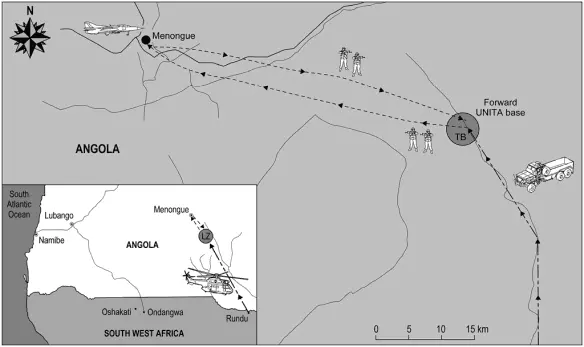
At that point, the MiGs ensured that FAPLA had air superiority in southern Angola. They had the advantage of holding time, or time-over-target, as they had a mere 60 to 80 km to fly to the combat zones. The South African Mirage F1s and Buccaneers, however, had to fly from Grootfontein; by the time they reached their targets, they had only ten minutes of fuel left. Hence they seldom engaged in dogfights, as their window of opportunity was too limited. The Impala jets operating from Ondangwa and Rundu had neither the range nor the armament to engage the MiGs.
With Dave Drew’s assistance, Diedies had been studying the patterns at Menongue, in Cuando-Cubango province, trying to ascertain the number of fighters, where they were parked, how they were protected and how they could be approached.
While the rest of 5 Recce was deployed on Operation Colosseum, Diedies travelled to Pretoria to make presentations to the GOC Special Forces, Major General Joep Joubert. The idea was proposed to the Chief of the Defence Force, General Jannie Geldenhuys, who agreed to the plan in principle but had to clear it with the Minister of Defence.
The operation was approved, but we still had to present the final plan and get authority for air support. This required some powers of persuasion, as it would be considered an act of sabotage – and a breach of international conventions – if a South African soldier was caught placing explosives on FAPLA aircraft. Up to that point UNITA had claimed all the successes for downing enemy aircraft.
Menongue would be the first target, mainly because fighters were operating from there against the South African forces deployed at Cuito Cuanavale, but also because it was considered an “easier” target than Lubango.
It was business as usual as Diedies, Neves Matias, José da Costa and I returned to Sawong to prepare for our next deployment. We forced ourselves to adapt to a switched routine – working at night and resting during the day. Every night we would practise navigation, patrol tactics and stalking a target.
We spent hours stooped over maps and aerial photos, working out routes, hiding places and a final approach. A photo interpreter from the Air Force, equipped with all the latest aerial photography, state-of-the-art stereoscopes and even a scale model of the target, was there to assist us.
We also used the daylight hours to study the dimensions and vulnerable points of MiG-21 and -23 jets. Using enlarged graphics of the aircraft, we determined exactly where to position the explosives for maximum effect, the idea being that the charge would cause a secondary explosion of the fuel tanks, which in turn would damage adjacent aircraft. Our reasoning was that if a charge could be placed on every second or third aircraft, we could effectively cripple the whole airfield.
We had also tested a range of blue and grey camouflage in varying light conditions. In the end we decided to use a single type of clothing for day and night. It appeared that dark blue and olive green had similar qualities in the pitch-dark conditions we were aiming for. In better-lit areas such as dam walls and power stations, a light blue or grey colour would be suitable, but, since our target area would be fairly dark, we decided on an olive drab as best suited to both day and night conditions.
For the final stalk Diedies initially wanted us to use tracksuits made of an elasticated nylon-type material, as he thought it would be better for crawling and climbing fences. However, we soon realised this was not practical, as thorns and dry grass tended to stick to the material and it got hooked on the bushes too easily.
For protection, as well as for silent movement during the stalk, we exchanged the normal anti-track covers for grey sheepskin covers over the feet, knees and elbows. At some point during the rehearsals – and actually during our first deployment – we had the woollen covers stitched to the actual clothing, covering the knees and elbows, but this proved to be a nuisance when walking. Finally Whalla-whalla van Rensburg, our unit tailor, came up with a solution: woollen covers with broad elastic bands that could be pulled over the knees and elbows, with the added benefit of pulling the sleeves tight to the body. For the approach to target we could therefore use the normal canvas anti-track covers, and don the sheepskin protection once we started the actual stalk.
For the Menongue target we decided that three of us, Diedies, Neves and I, would approach the outskirts of town, and that Neves would remain on the high ground east of the target to maintain radio comms with the Tac HQ while Diedies and I did the final penetration.
The charges were specially prepared by EMLC – moulded explosives, Torpex with an aluminium base as incendiary, and a time-delay trigger device code-named Tiller that would give us enough time to move out of the area before arming itself. Tiller also incorporated a light sensor as well as a potent anti-lifting device. To conclude the package, each device had a tube with two chemicals. When squeezed, the chemicals mixed and formed a quick-drying, potent epoxy glue – the so-called Vernon Joynt glue, after its inventor, the ingenious Dr Vernon Joynt.
Читать дальше
